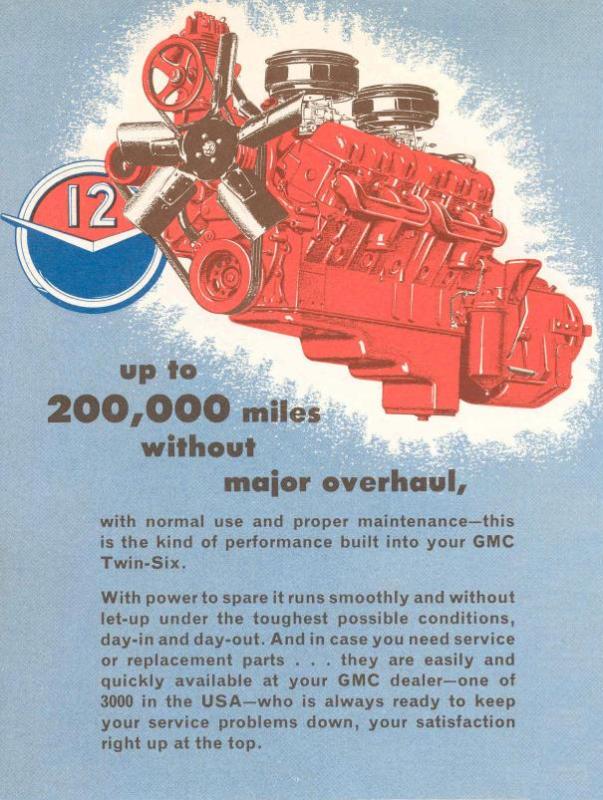Being a brief foray into the post-war netherworld of large truck payloads, under-powered gasoline engines vs expensive diesels - and the innovations that sprang from this odd situation.
The proud specimen above is the only example ever made of the Eisenhauer Freighter. Other pics of it exist with different (other than cattle truck) bodies but, alas all of them were Photoshopped by means of some 1940's-era, photo-bogusizing system.
Thanks to same system, you can see that the unit could also rock a tank bed.
Where to begin.
My odd obsession with the stone-age simplicity and attendant reliability of straight-six engines has been made evident already. One in particular is a fave.
Chevy 235: Winner of the North Africa, Fuel-Stamina Derby during WW2 - and the engine that safely transported me from third grade up through high-school at which time it served admirably as I bashed it around in the woods like I did with my Dad's pickup - only in a '63 Biscayne wagon.
Not this one. Ours was beige.
But, back to the big beast at the top: You've probably noticed that it had five axles. The front two steered while the first and the third of the rear axles were driven. The rearmost axle also swung free on curves but could be locked in place for backing up.
Fact is: All this under-carriage was necessary just to support the awesomeness of the mill(s) that motivated the unit.
It was two (yes, two) of the afore-mentioned, 235 CID, one-hundred-and-forty-horsepower, bad boys; one mounted just behind and above the other.
And that's what made it go down the road. The front engine drove the first of the three rear axles while the rearward engine drove the last. Each could run separately as well.
The two seemingly extra axles increased load capacity and smoothed out the ride so they said.
Methinks though, the Armstrong Power Steering (TM) needed to nudge those four big wheels around might be why the idea didn't take off.
Here's a thought!
Rather than trying to shoehorn two complete engines into one truck, just shoehorn said engines into one... engine.
This monster roamed the earth powering some of GMC's big trucks in the sixties as a last ditch holdout against diesel. Although a limited number were made, around five thousand, they still enjoy a following. They're still being restored, sold and presumably used. $10,500 at the low end.
This is the GMC 702 V-Twin.
Same general idea as the Eisenhauer above (and others - by the way) but with the two engines all rolled into one.
This was two GMC 351 cid V-6's cast into one block. Folks say that it's two V-6's welded together but; what idiot thinks you can weld cast iron?
“The block is one-piece with over sized bore spacing for improved cooling, and it’s equipped with seven main bearings... It also has a one-piece, hardened forged-steel crankshaft that weighs 180 pounds.”
So, a single block and a single crank but with two distributors running off one drive, four heads and valve covers and lots of inter-changeability with the 351 engine.
That means that each of the fifty-six head bolts needed here were exactly the same as those used on other GMC engines of rational proportions.
In fact, sixty, major parts in all were inter-changeable. But not the oil pan, it was unique: It ran the full length of the block and held four gallons.
This one's for sale.







U-tube for dual steer--lots
ReplyDeleteof examples
then for the ultimate in twin
engine machines the Euclid TC-12
is the beast of beasts
https://www.youtube.com/watch?v=28N8arOPJkI
This comment has been removed by a blog administrator.
ReplyDeletebalenciaga
ReplyDeleteyeezy 500
pandora jewelry
pandora
supreme hoodie
kd 10
curry 8
off white outlet
curry 6 shoes
yeezy 350 v2
best replica bags online aaa replica bags cheap replica handbags
ReplyDeletego to this site helpful hints home helpful hints Read Full Article read the article
ReplyDeleteyou can try this out moved here discover this click here for info Your Domain Name bag replica high quality
ReplyDelete